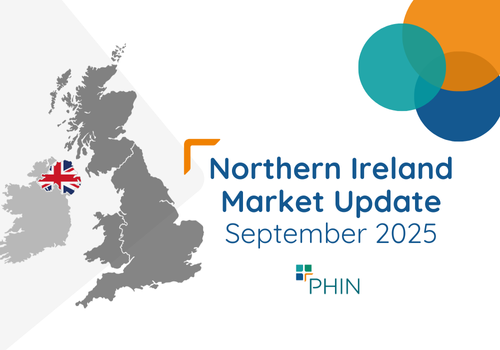In the latest of our quarterly updates, we use our unique, national dataset to provide a comprehensive view of the key trends in the independent healthcare sector up to, and including, the end of quarter one 2025.
The data covers private healthcare in-patient/day-case market activity and includes breakdowns by year for insured cases, ‘self-pay’, nation, Top 10 procedures, and demographics.
(Q1 = Jan – Mar; Q2 = Apr – Jun; Q3 = Jul – Sep; Q4 Oct – Dec)
Private healthcare sector market activity

At a glance
Changes from Q1 2024 to Q1 2025 in Northern Ireland:
- Reported private hospital/clinic admissions were up 2% to new record level.
- Private medical insurance admissions were up 5%.
- Self-pay admissions were down 3% but saw the first consecutive quarterly rise in over a year.
- Third consecutive quarter of growth in total reported admissions.
Record independent healthcare in-patient admissions in Q1 2025
The total number of admissions in Q1 2025 was 6,230 (2% above Q1 2024) meaning the private sector had more admissions than in any previous quarter on record.
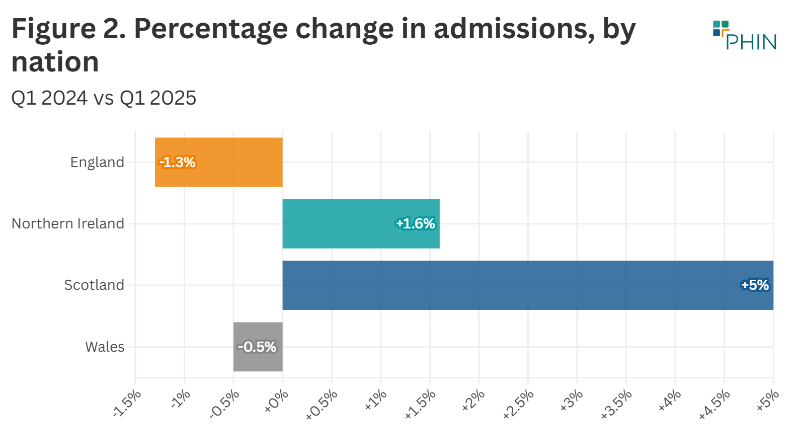
Insured admissions
Admissions funded by private medical insurance were at their second highest level ever in Q1 2025. The highest level ever (3,795) was in Q4 2024.
There were 185 more insured admissions in Q1 2025 than in Q1 2024 (5% increase).
Northern Ireland’s percentage increase was the largest of any nation or English region apart from Scotland (10%) and the West Midlands (tied at 5%).

Self-pay admissions
Self-pay admissions in Q1 2025 were down by 90 (-3%) compared to Q1 2024. This follows the same pattern as every UK nation.
However, despite this pattern, after quarterly declines for the past four quarters, there was an increase in self-pay admissions for the first time since Q4 2023.
This is reflected in the growing proportion of admissions being funded with self-pay in Q1 2025.

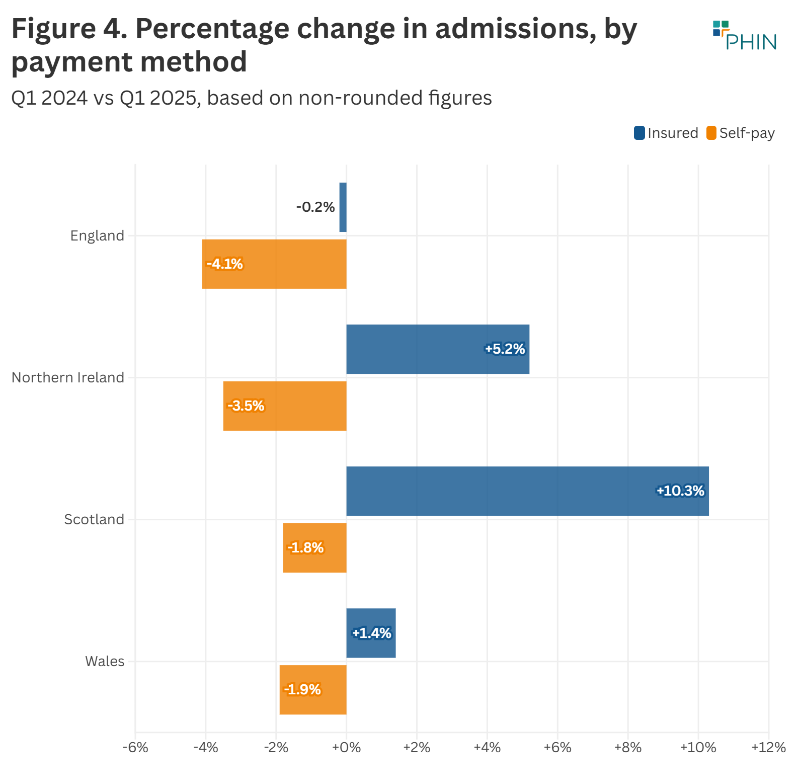
Top 10 procedures in Northern Ireland
Kingsbridge Private Hospital Group – the largest independent provider of admitted care in Northern Ireland – did not include clinical coding (which shows the type of procedure) in its admissions data, so PHIN is unable to publish an accurate top 10 procedure list for Northern Ireland this quarter.
Active consultants in private healthcare by quarter
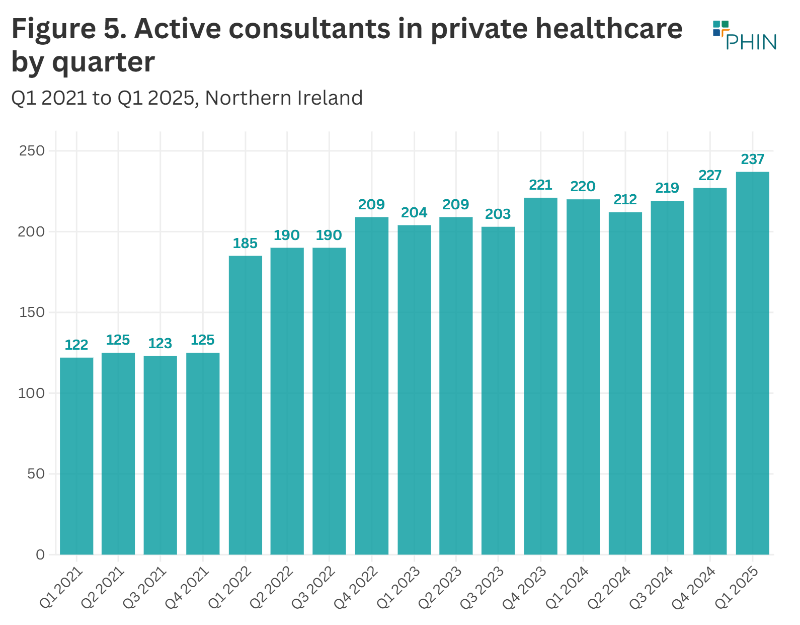
The number of consultants active in private healthcare regularly fluctuates as new consultants start working in the private sector, and existing ones go on sabbatical, stop working privately, or retire.
The number of active consultants (237) in Northern Ireland in Q1 2025 was the highest level ever recorded, a 7.7% increase on Q1 2024.
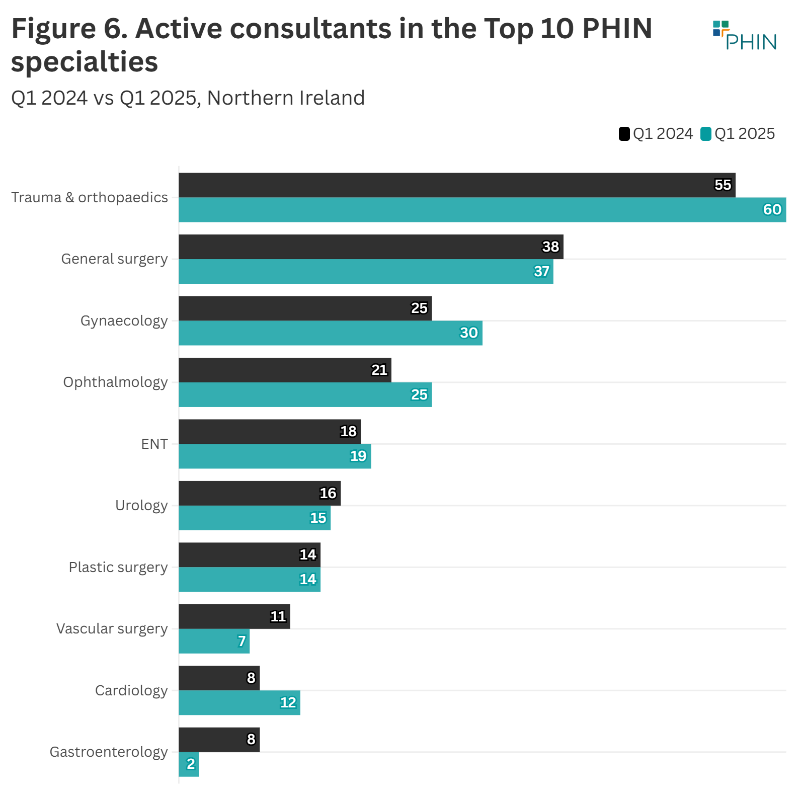
The largest volume increase (5) was in ‘Trauma & Orthopaedics’ and ‘Gynaecology’. The largest percentage increase (50%) was in ‘Cardiology’ where there were an additional four consultants.
Patient demographics
Payment method
There was an increased number of insured admissions for both sexes in Q1 2025 compared to Q1 2024. Female insured funded admissions increased 7.3% and male admissions 3.1%.
Female self-pay funded admissions fell 1.8% and male admissions were down 2.6%.
Overall admissions were up (3.5%) for female patients and male patients (0.7%).
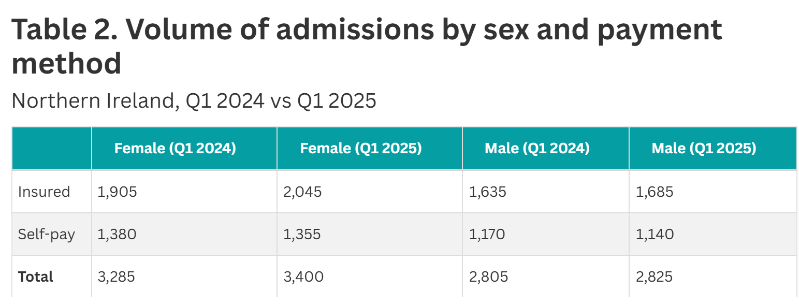
Volume of admissions by age
There was a decrease in admissions for all the age group from 0 to 9 to 30 to 39 and then an increase in all age groups above 40 except the 70 to 79 year olds in Q1 2024 compared to the previous year.
Admissions decreased across all age groups from 0-39. Admissions increased in all age groups aged 40 and above, except for those in the 70-79 age group.
The largest volume increase (105) and percentage increase (12%) was in the 50 to 59 age group.
The largest volume decrease (70) and percentage decrease (19%) was in the 20 to 29 age group.
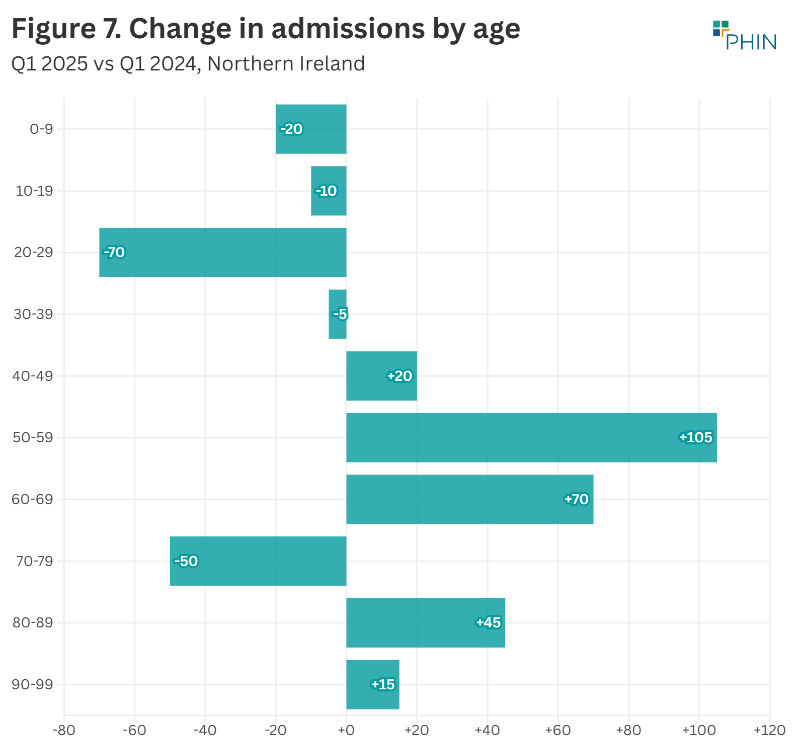
Important notes
All data described above taken from PHIN’s unique, national private dataset describing discharge activity (day case and inpatient). This excludes activity outside of PHIN’s mandate from the Competition and Markets Authority, such as outpatient diagnostics, physiotherapy and mental health services.
There is a time lag between collecting, validating and processing the data we receive from hospitals before we can publish it. This can be up to 6 months after treatment has been completed, to ensure a fair process and accurate data.
Activity numbers have been rounded to the nearest 5, with percentage based on the unrounded figures.
